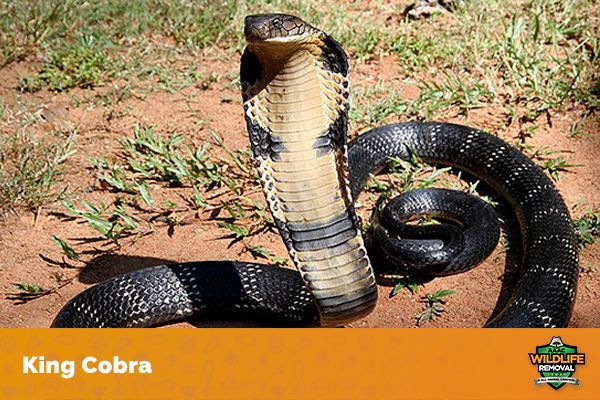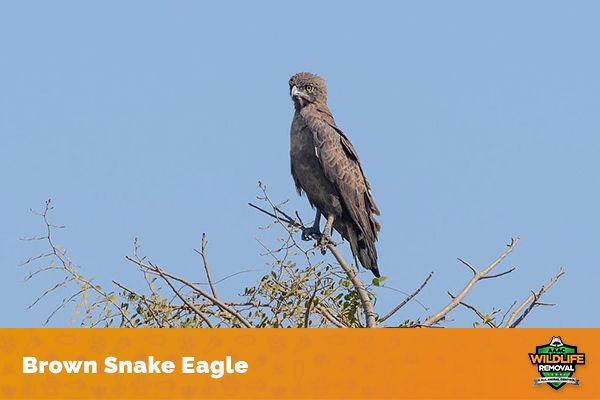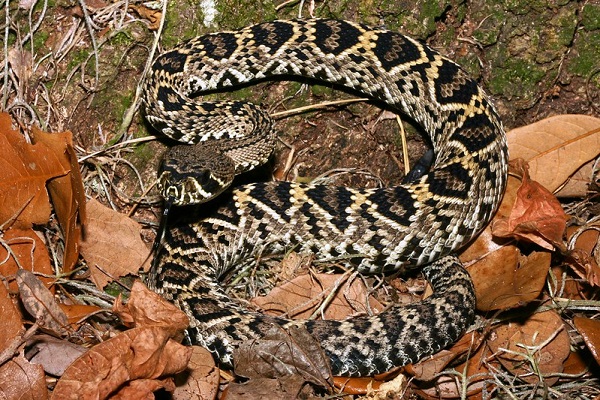Snakes are excellent hunters and are known to be very effective predators. They are some of the most feared animals worldwide, and with good reason. But what happens when the tables are turned and snakes become the prey? Who are their predators?
We’ll look at some of the most common animals that eat snakes and learn a little about each.

What animals eat snakes?
Snake predators, from the smallest rodents to giant birds, come in all shapes and sizes. Some predators hunt snakes actively for food, while others may stumble across them while searching for other prey.

Coyotes
Coyotes have an excellent sense of hearing and smell. They pursue snakes by utilizing both of these traits. They use pouncing to capture them, like foxes catching voles and mice. Coyotes use their jaws to destroy their prey; some individuals have even seen them throw snakes into the air.
Coyotes are brilliant animals; aware snakes might be dangerous to their young. A coyote might hunt a snake for reasons other than food, such as to defend its den.

Foxes
Foxes don’t have a particular preference for what they eat, although they tend to avoid specific snakes when hunting. Water snakes and aggressive, venomous snakes are off-limits.
Foxes don’t mind eating dead snakes, either. We may find it disgusting, but that’s how scavengers live! Foxes are more than happy to pick up eating another meal that another animal hasn’t finished, whether the reason for death was natural or not.

Bobcat
One of the most fearless predators in nature are bobcats. They can quickly bridge the gap between themselves and a snake to kill it before the snake has a chance to strike back, thanks to their incredible jumps. They are among the few natural animals with the guts to kill snakes.
If bitten, they are not immune to the snake venom. But by timing its blows and slapping the rattlesnake’s face downward, they manage to escape getting bitten.

Wolverine
The wolverine is a robust and adaptable scavenger and predator. It climbs and spends a lot of time catching birds or snakes in trees. Wolverines go 15 miles daily searching for food and excavate burrows to attack other hibernating animals.

Mongoose
Mongooses are famous for daring attacks on venomous snakes like king cobras. They can fight and eliminate poisonous snakes because their specialized acetylcholine receptors make them immune to poison. Their rapid reflexes and thick coats are quite helpful in battles with snakes.

Honey Badger
Honey badgers love hunting king cobras. They have a very strong resistance against snake venom and are always looking out for snakes to eat. The honey badger keeps an eye out in the dense underbrush, trees, and even caves for animals on its food chain because they are seen as high-yield meals. The predatory badger consumes more than half of its total diet of snakes during the warmer months when snakes are most active.
Scientists have not adequately explained the immunity of the honey badger from venomous snakes such as cobras and puff adders. One honey badger observed by researchers passed out after consuming a puff adder’s head. The badger appeared to have died, but two hours later, it awoke from a hazy nap and staggered away.

Hedgehog
The hedgehog’s resistance to various toxins is one of its peculiar and exceptional traits. It enables the animal to devour poisonous snakes and insects with little to no consequence. Hedgehogs have been known to eat all sorts of poisonous creatures, including scorpions, centipedes, and even venomous snakes.
Other Snakes
Many snakes eat other snakes, including members of their own species. This is particularly common in areas where there are large populations of snakes and not enough food to go around. These “snake-eat-snake” interactions usually involve younger, smaller snakes being eaten by larger ones.
Many snakes are immune to the venom of other snakes and will actually hunt and eat them.
This type of behavior, however, is common in snakes. Rumor has it that some earned the title “king,” whether in the desert or the forest, for their delight in ruling over its snake kingdom while happily devouring their kind. Here are some examples of snakes that prey on other snakes:

King Cobra
The king cobra or “Ophiophagus hannah,” meaning “snake eater,” is the world’s longest poisonous snake. While these predators will devour giant lizards and other similar cold-blooded animals, they prefer to feast on snakes. Some have a terrifying 18-foot span.
The king cobra’s venom is strong enough to kill an elephant with just one bite, and it can strike at speeds of up to 12 miles per hour. Other snakes surely don’t stand a chance against this reptilian king.

Kingsnake
Like the king cobra, the “king” part of their name refers to their propensity to kill venomous snakes and other reptiles. These North American king snakes prefer venomous species such as rattlesnakes, cottonmouths, and copperheads. These snakes’ venom does not affect them, so they can eat other snakes whenever they want. Kingsnakes rely on constriction to subdue their prey because they lack venom.

Eastern Indigo Snake
The Eastern indigo snake is a nonvenomous long black snake. It is a long snake native to North America, with males reaching 7 to 9 feet and females being shorter.
They are not constrictors, like kingsnakes, and instead, rely on chasing and brute force to take down prey. When they catch prey, they pin it against a hard surface and suffocate it with a powerful bite. Copperheads, cottonmouths, and rattlesnakes are its favorites. They may be immune to rattlesnake venom, which allows them to be effective predators of venomous vipers and keep their populations in check.

Coachwhip
Coachwhips are non-venomous, long, and slender snakes native to the Americas, most common in South America. They have a distinctive patterning that resembles a braided whip and black or dark brown coloring that lightens as it approaches the tail. These snakes actively seek prey, reaching speeds of up to 4 miles per hour in pursuit. They subdue prey without venom or constriction, instead striking out and grasping victims in their jaws. They eat them alive or dead.
Large Birds
Large birds are also a threat to snakes, as they will swoop down and snatch them up in their talons. This is especially a problem for snakes that bask in open areas, like rattlesnakes and garter snakes.
These flying hunters use their powerful beaks and talons to kill their prey, and they are not afraid of snakes. In fact, many birds will target snakes as a food source.
Some of the most common predators of snakes are:

Snake Eagle
The brown snake eagle is a large raptor that is only found in Africa. They prefer woods or grasslands with plenty of tree cover. The brown snake eagle gets its name from its almost uniformly dark brown plumage, as the name implies. Brown snake eagles eat all types of snakes, including adders, cobras, and black mambas.

Owl
Large owl species, such as Great Horned Owls, Barn Owls, and Barred Owls, are common predators of medium-sized snakes. Snakes are not the primary food source for these birds, but they will opportunistically hunt and eat them.

Falcon
Like the other birds of prey on this list, Falcon loves to eat snakes. The Laughing Falcon, in particular, is notorious for eating snakes in its range in South and Central America, even eating highly venomous Coral Snakes.

Hawk
Hawks swoop down and flap their wings to distract the snake before quickly grabbing it behind the head and carrying it away. Hawks will not only eat non-venomous snakes but will also eat venomous snakes.
Humans
Humans hunt snakes for food. Snake meat is a delicacy in some cultures. According to ancient Chinese medical texts, snake soup has various medicinal benefits, including the cure of bodily ailments, blood nourishment, skin quality improvement, and an increase in one’s qi or energy levels. People may even hunt snakes for their skin, to make clothing or other items in some cases.
Final Word
So, there you have it! These are some of the wild animals that prey on snakes. Did some of them surprise you? Like other animals in the animal kingdom, Snakes are an essential part of the ecosystem, and their survival is crucial for the balance of nature.
If you see a snake, always keep a distance and admire it from afar. Please do not attempt to handle or capture snakes from their natural habitat, as they can be dangerous. Leave these slithering reptiles alone, and they will do the same.














